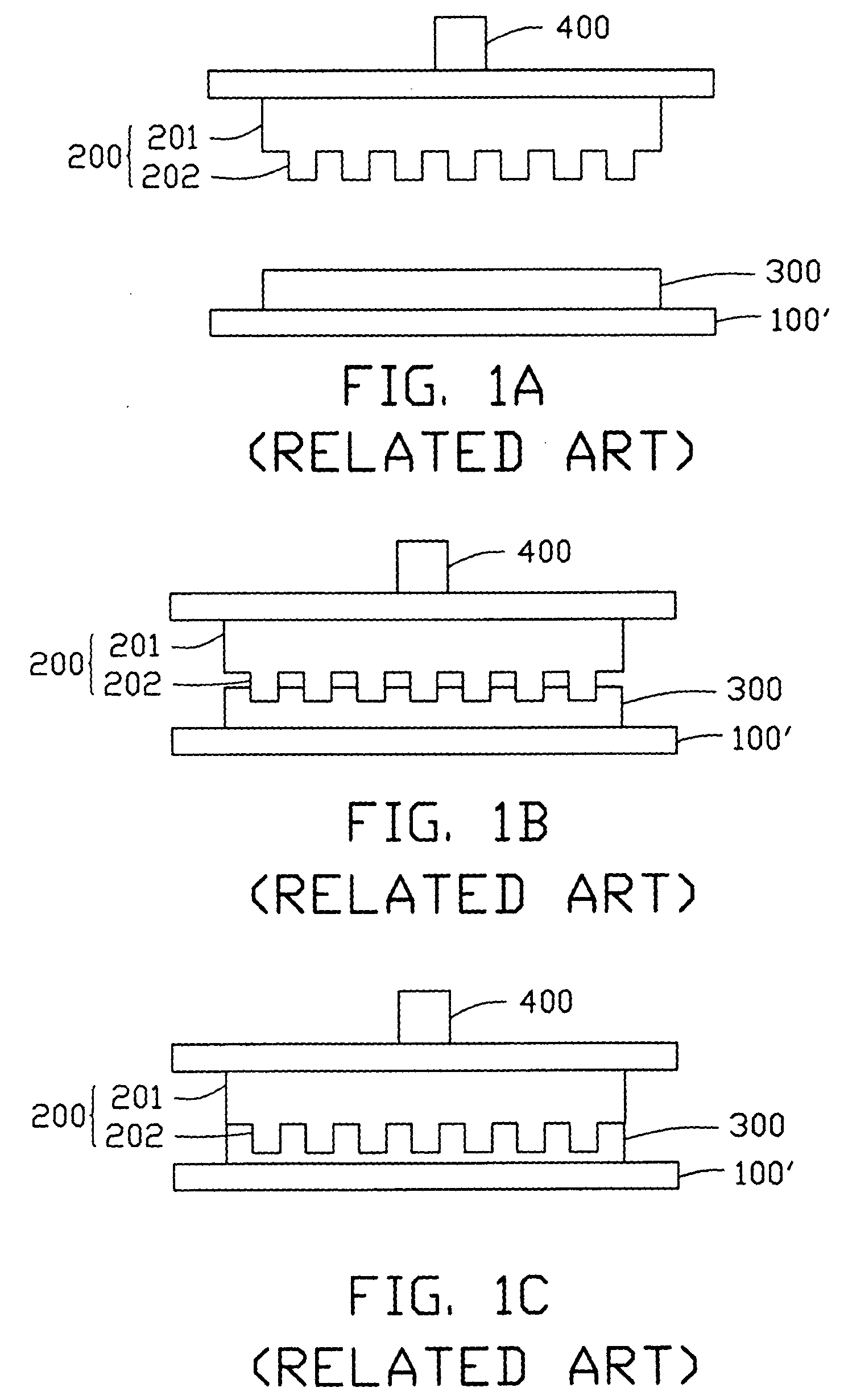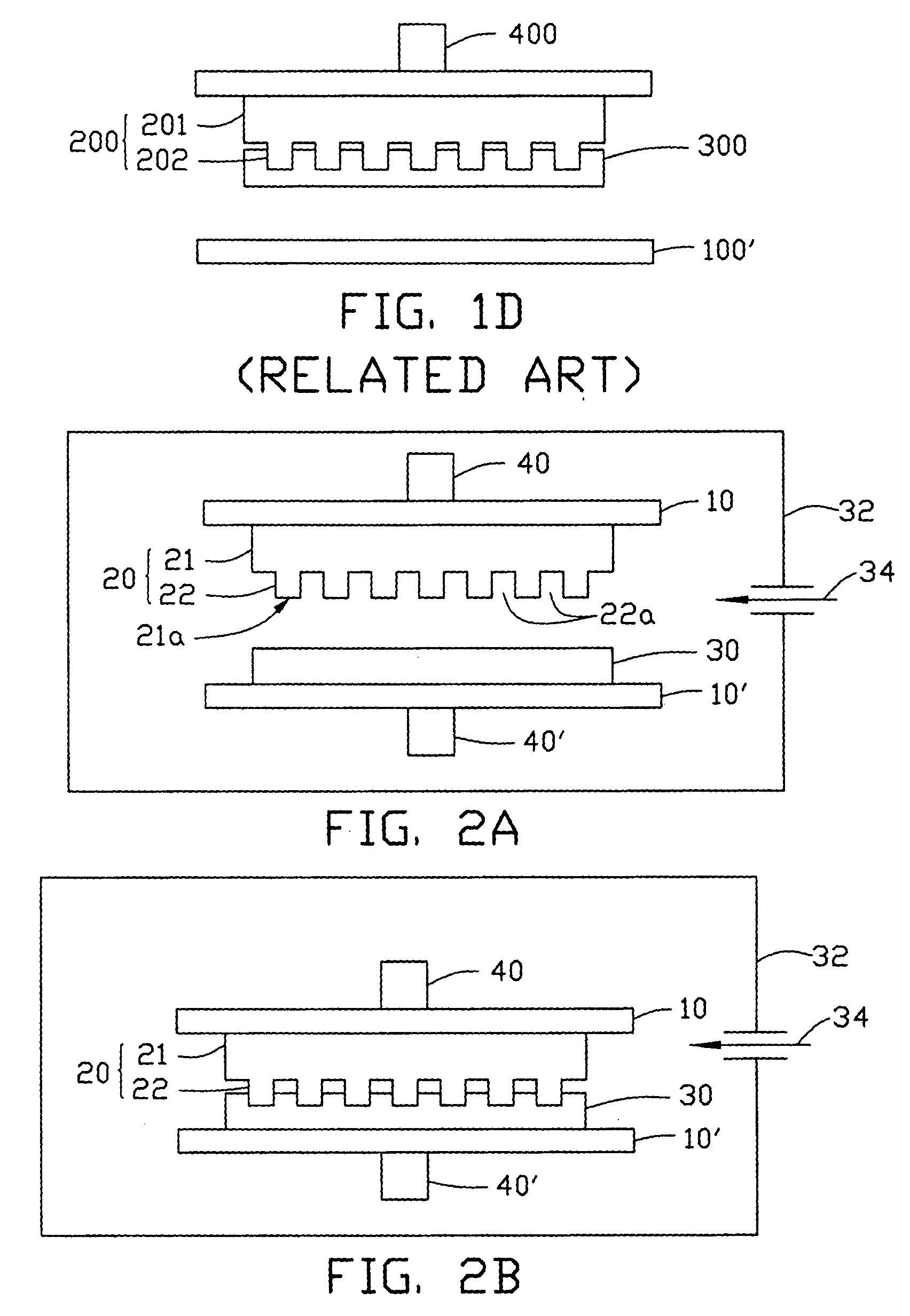Hot embossing lithography method
a lithography and hot embossing technology, applied in the field of lithography methods, can solve the problems of reducing the precision of the pattern on the polymer thin film or even destroying the pattern, difficult to form an additional thin layer on the press surface, if even possible, and difficult to maintain the precise depth or width of the relief features. , to achieve the effect of softening the polymer thin film and lowering the surface adsorption energy
- Summary
- Abstract
- Description
- Claims
- Application Information
AI Technical Summary
Benefits of technology
Problems solved by technology
Method used
Image
Examples
Embodiment Construction
[0042] Reference will now be made to the drawings to describe preferred embodiments of the present hot embossing lithography method, in detail.
[0043] Referring to FIGS. 2A to 2D, a hot embossing lithography method according to a first preferred embodiment is shown. First, a press mold 20 and a substrate 10′ having a polymer thin film 30 formed thereon are provided. The press mold 20 includes a main body 21 and a press surface 21a. The press surface 21a defines a pattern containing a number of relief structures 22 having a desired shape. Every two neighboring relief structures 22 define a recess 22a therebetween. Generally, the relief structures 22 and the recesses 22a each have a lateral size of about 100 nanometers or less, preferably less than 25 nanometers.
[0044] The polymer thin film 30 can be deposited or coated on the substrate 10′ by any appropriate method, for example, spin coating. Preferably, the polymer thin film 30 includes a thermoplastic polymer, such as polymethyl m...
PUM
| Property | Measurement | Unit |
|---|---|---|
| glass transition temperature | aaaaa | aaaaa |
| pressure | aaaaa | aaaaa |
| glass transition temperature | aaaaa | aaaaa |
Abstract
Description
Claims
Application Information
 Login to View More
Login to View More - R&D
- Intellectual Property
- Life Sciences
- Materials
- Tech Scout
- Unparalleled Data Quality
- Higher Quality Content
- 60% Fewer Hallucinations
Browse by: Latest US Patents, China's latest patents, Technical Efficacy Thesaurus, Application Domain, Technology Topic, Popular Technical Reports.
© 2025 PatSnap. All rights reserved.Legal|Privacy policy|Modern Slavery Act Transparency Statement|Sitemap|About US| Contact US: help@patsnap.com



